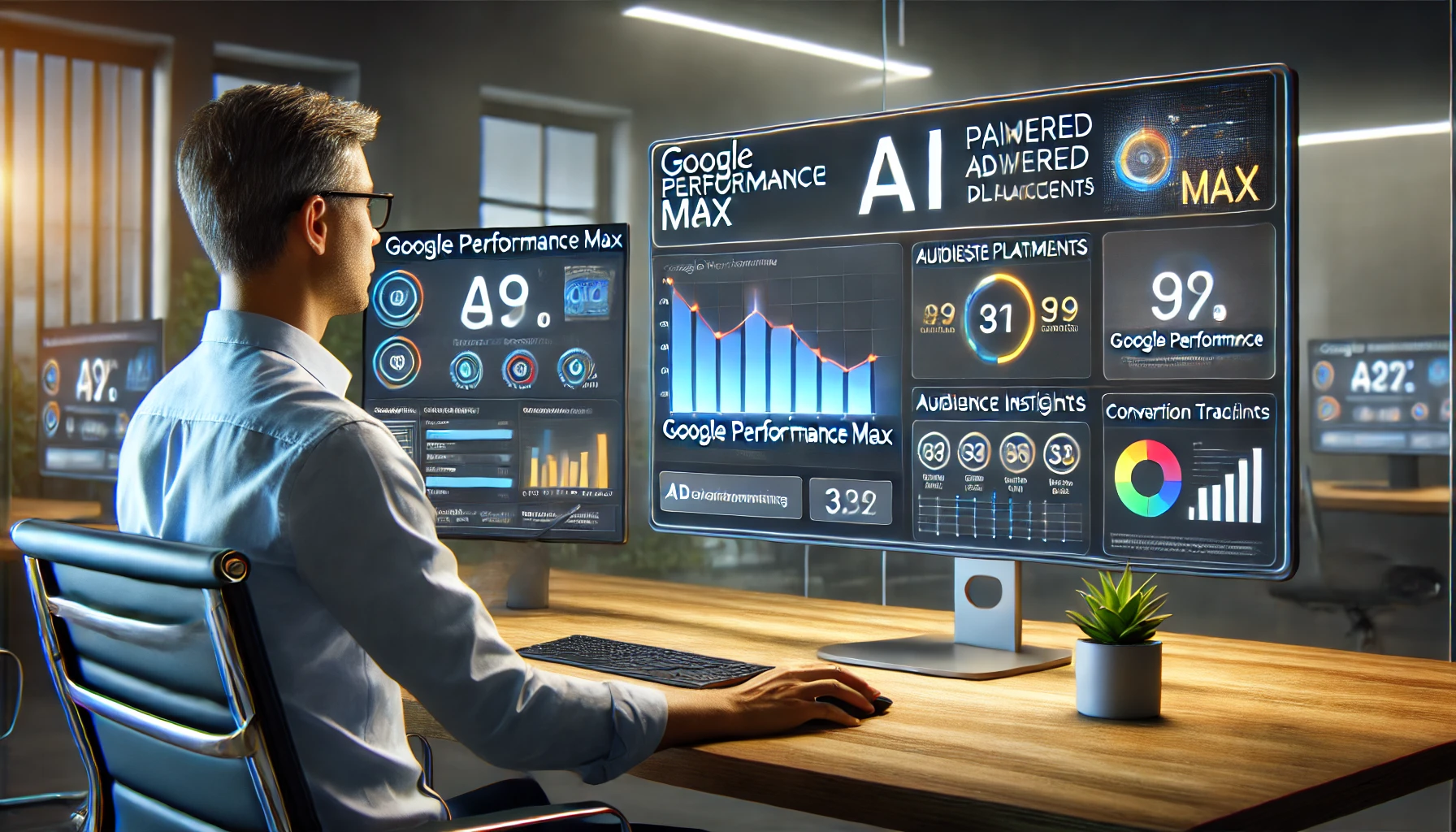Google Performance Max is one of the most advanced and powerful campaign types available in Google Ads today. It allows you to promote your products or services across all Google channels—Search, Display, YouTube, Gmail, Maps, and Discover—within a single campaign, powered by Google’s AI.
In this guide, you’ll learn how to set up a Performance Max campaign step by step, when to use it, and how to optimize it for the best return on investment (ROI).
🚀 What Is Google Performance Max?
Performance Max is a goal-based campaign type that uses machine learning to automate bidding, budget allocation, placements, and even ad creation.
Instead of managing multiple campaigns across different platforms, Performance Max uses a centralized asset group and spreads your message across the entire Google ecosystem—automatically.
🎯 When Should You Use Performance Max?
Performance Max is ideal when you want to:
- Maximize conversions across multiple channels
- Simplify account management
- Reach customers across Google properties
- Let automation do most of the heavy lifting
Best for:
- E-commerce
- Lead generation
- Local businesses
- Agencies managing multiple clients
Avoid if:
- You need granular placement control
- You have limited conversion data (under 30 per month)
- Your business is new and lacks historical performance insights
🛠️ How to Set Up a Performance Max Campaign
Step 1: Create a New Campaign
- Log in to Google Ads
- Click + New Campaign
- Choose a goal:
- Sales
- Leads
- Website Traffic
- Select Performance Max as the campaign type
- Set your daily budget and choose your bidding strategy (see below)
Step 2: Build Your Asset Group
Upload the following creative assets:
- Final URL – the landing page you want to drive traffic to
- Headlines (3-5) – max 30 characters each
- Descriptions (2-4) – max 90 characters
- Images (at least 3) – high-quality, ideally 1:1 and 4:5 ratios
- Videos (optional) – if not provided, Google will auto-generate
- Logo – to ensure brand consistency
Pro Tip: Upload multiple versions of each asset type so Google’s machine learning can test and optimize combinations.
Step 3: Set Up Audience Signals
While Performance Max uses automation to find the right audience, Audience Signals give it a starting point.
Add:
- Custom Segments – based on keywords your ideal customer may search
- Your remarketing lists – past site visitors, cart abandoners, etc.
- Customer match lists – existing leads or email subscribers
- Lookalike segments – people who behave like your best customers
Audience Signals help Google learn faster and improve results.
Step 4: Choose a Bidding Strategy
Performance Max supports smart bidding options:
- Maximize Conversions – great for beginners or campaigns with volume goals
- Target CPA (Cost per Acquisition) – maintain control over what you pay per conversion
- Target ROAS (Return on Ad Spend) – ideal for e-commerce and value-based goals
Start with Maximize Conversions, then switch to CPA or ROAS once you have 30+ conversions per month.
📊 How to Optimize Your Performance Max Campaign
1. Monitor Asset Performance
Use the Asset Report in Google Ads to track:
- Which headlines, descriptions, and images are performing best
- Replace underperforming assets with new variations
- Double down on top-performing combinations
2. Use Placement and Audience Insights
Although Performance Max doesn’t let you control placements, you can:
- Review which websites/apps your ads appeared on
- Use Audience Insights to understand who is converting
- Adjust messaging and creative based on demographics, location, and device performance
3. Exclude Unwanted Traffic Sources (if needed)
Use account-level placement exclusions (like mobile apps) to avoid wasting budget on low-quality traffic.
🧠 Performance Max vs. Standard Campaigns
| Feature | Performance Max | Standard Campaigns |
|---|---|---|
| Channels | All Google platforms | One channel per campaign |
| Creative Input | Asset-based, AI-generated combos | Manual ad creation |
| Audience Targeting | AI-based with optional signals | Manual targeting |
| Budget Allocation | Automated | Manual |
| Optimization | AI-powered | Requires manual adjustments |
💡 Final Tips
- Don’t “set and forget” – review and update assets every 2–3 weeks
- Use conversion tracking – make sure your goals are set up and firing correctly
- Test promotions and seasonal content – Performance Max works best with fresh, relevant assets
- Sync with Google Merchant Center – if you’re running e-commerce, this is essential
✅ Final Thoughts
Google Performance Max campaigns can help you scale faster, smarter, and across more channels with less manual effort. When set up correctly and paired with clear goals and great creative assets, this campaign type can deliver outstanding results—especially for businesses that want to maximize ROI without managing a dozen separate campaigns.
Let the AI do the heavy lifting—and stay focused on what you do best: growing your business.
